Exporting the Islamic revolution has been a primary objective for the Iranian regime since the overthrow of Shah Mohammad Reza Pahlavi in 1979. Latin America became the target for two reasons: Tehran saw the region as the perfect, fertile soil for disseminating anti-United States ideals, and from which to challenge that country strategically. Over the years, the Iranian regime’s terror networks expanded their influence in through cooperation with violent drug cartels, often assisted by corrupt politicians. Thanks to this network in crucial areas of Latin America, Iran’s proxy Hezbollah now plays a central role in human and arms trafficking, the illegal tobacco trade, money laundering and terror financing, while Iran strengthens its political presence. The operations of Iran and Hezbollah in Latin America feed each other, intending to expand an ideology and establishing themselves as a real and present threat.
Argentina: Where it All Began
Tehran’s incursions in Argentina go back to at least 1983, with the arrival of Mohsen Rabbani. Rabbani flew in on a tourist visa and initially positioned himself as a halal meat inspector, but soon after he became a teacher and later leader of the At-Tawhid Mosque in Buenos Aires. Almost ten years later in 1993, he was appointed cultural attaché of the Iranian Embassy.
Dr Emanuele Ottolenghi, a member of the Foundation for the Defense of Democracies and a researcher on Iran's criminal networks in Latin America, told IranWire Argentina was the point where Iran’s “expansion” plans began. “Argentina is where Iran’s penetration began four decades ago. It is therefore the oldest and one of the better-developed networks Iran has in the region. One of the heads of Al Mustafa University’s Latin studies program, as you know, is Argentinian [Suhail/Edgardo Ruben Assad]; the mosque network affiliated with Iran in Argentina has a strong presence not just in Buenos Aires; one of their local clerics is in charge of their centre in Chile; another is in charge of running converts’ trips to Iran. It remains an important hub of activity, recruitment, fundraising and proselytizing.
“Iran and its terror proxy, Hezbollah, have had a significant impact on the region for the last four decades. Let’s not forget [there were] three successful terror attacks Iran and Hezbollah carried out, twice in Argentina, and once in Panama, killing more than a hundred innocent people and wounding scores more. Though no other successful attempt has occurred, it’s not for want of trying – we know of at least two significant plots that were thwarted, in Peru in 2014 and in Panama in 2017.”
While Mohsen Rabbani was staying in Buenos Aires, he also planned a terror attack in his adoptive city. According to the late Argentine prosecutor Alberto Nisman, during his years as Imam of the At-Tawhid Mosque, Rabbani recruited adherents and created an intelligence network reporting to the Iranian Embassy in Argentina – and from there, to Tehran.
Then on March 17, 1992, a suicide bombing at the Israeli Embassy left 29 dead and 300 wounded. Two years later, on July 18, 1994, another bomb attack on the headquarters of the AMIA (a Jewish mutual association) in Buenos Aires killed 85 people and injured more than 300. It was considered the worst terror attack in the history of Argentina and one of the most severe attacks on the Jewish community since World War II.
Groups linked to Hezbollah claimed responsibility for both attacks, while Hezbollah was deemed ultimately culpable by the Argentine Supreme Court. Later on eight Iranians with ties to the Iranian Embassy admitted that Mohsen Rabbani had been one of the leading architects of the AMIA atrocity.
A Pattern of Behavior
The Iranian regime, Ottolenghi says, has taken advantage of local vulnerabilities to export its ideals to Latin America. “Iranian regional networks exploit structural weaknesses in the region, such as porous borders and corrupt institutions, to conduct their activities with impunity. Iran and its proxies have thus contributed greatly to the growth of both organized crime and state corruption, two of the greatest impediments to Latin America’s democratic governance and economic prosperity.
“Iran has also propped up authoritarian regimes through its strategic alliance with Venezuela and its ideological convergence with Bolivarianism. Its close friendships with Venezuela, Bolivia, Cuba, and Nicaragua have allowed Iranian agents and Hezbollah networks to penetrate the region.”
In a written testimony to the United States Congress, Joseph Humire, director of the Center for a Secure Free Society and co-author of the book The Strategic Penetration of Iran in Latin America, defined Iran's "pattern of penetration" thus: "This pattern has four essential layers, beginning at an informal level through cultural exchange, then transcending into more formal diplomatic relations that allow for a more important level of economic cooperation.”
Cultural Penetration
In the 500-page indictment presented by the late Dr Alberto Nisman against seven high-ranking Iranian officials implicated in the AMIA attack, the prosecutor clearly and forcefully explained how Iran had used "cultural" activities as a cover to infiltrate communities in Latin America and build up espionage networks. "A more in-depth study allowed to uncover the illegality of this scheme,” he wrote. “The embassy fulfilled a protective function, providing diplomatic immunity and constituting the ideal channel for the transmission of information of interest. The mosques functioned as a recruitment base for people under the ideology of the Iranian Islamic Revolution.”
Joseph Humire believes the "dual purpose" of Iranian cultural hubs plays out similarly in other parts of the world. "Because Iran is a theocracy and the Ayatollah controls the country, embassy programs in target countries often include religious services that are used to spread the principles of the Islamic Revolution. With the growth of the Iranian embassies in Latin America, this ‘cultural’ activity has grown exponentially in countries such as Venezuela, Nicaragua, Bolivia, Brazil, Mexico and El Salvador".
The extent of these activities is startling. In Brazil, as IranWire has previously noted, at least two scouts groups receive training directly from leaders sympathetic to Hezbollah. Behind this soft indoctrination program is Bilal Mohsen Wehbe, defined by Dr Emanuele Ottolenghi as the "representative head of Hezbollah in South America". Originally from Lebanon, Wehbe has become a naturalized Brazilian and is recognized in that country as an "Islamic cultural leader".
In Peru, one of Mohsen Rabbani's main disciples is responsible for sharing the Islamic Republic’s ideological principles: Edgardo Rubén Assad, born in Argentina but naturalized in Lebanon and trained in Iran. He began working with indigenous groups in the Apurimac region in 2011 with Edwar Husain Quiroga Vargas, a Shi convert who was trained by Rabbani in Qom in 2009. On returning to Peru he founded “Inkarri Islam”, also known as the "Islamic Centre of Peru," which fuses local Andean culture with fundamentalist Islam and now has a record of spreading antisemitic propaganda. Through Inkarri Islam, Quiroga Vargas has promoted radical Shiite views in the indigenous population.
From 2012 to today, Quiroga Vargas has also opened five additional cultural centres throughout Peru and runs an Iranian-Inca cultural exchange program, sending dozens of Peruvian students to receive exclusive training with Rabbani in Iran. Astonishingly, as IranWire has previously reported, Quiroga Vargas also spearheaded Pedro Castillo’s successful presidential election campaign this year.
Part of Tehran’s project to export the principles of the Islamic Revolution is achieved through propagandistic media. The most visible in Latin America is 24-hour news broadcaster HispanTV, a Spanish-language arm of Islamic Republic of Iran Broadcasting (IRIB). Created in 2012 under the direct control of Edgardo Rubén Assad, HispanTV airs in at least 16 countries. Through this and other channels, the Islamic Republic is able to promote its ideology and foreign policy goals.
Diplomatic Penetration
The Islamic Republic also carries out criminal activities in Latin America under the guise of economic, diplomatic and military cooperation. Humire notes “the high level of corruption in most Latin American governments" makes it easier for this to take place. A key example is the now-infamous Iran Pact: a memorandum of understanding between the former Argentine government, under then-premier Cristina Fernández de Kirchner, and Tehran to give Iranians immunity from prosecution after the AMIA bombing.
It was, again, the late prosecutor Alberto Nisman who pieced together how this shocking agreement came to be. "The criminal plan was activated when Argentine Foreign Minister Héctor Timerman travelled to Aleppo in 2011 and secretly met with his Iranian counterpart, Ali Akbar Salehi," Nisman wrote. "At that meeting, Timerman informed Akbar that the Argentine authorities were willing to renounce the AMIA investigation to prompt a geopolitical rapprochement and re-establish full commercial relations between the two states." That is to say, business interests had overruled justice in the eyes of the Argentine government.
Nisman was due to present his findings to the National Congress in Argentina on Monday, January 19, 2015. But he was found dead in Buenos Aires on the night of January 18, shot in the head in his own apartment.
Ottolenghi has little hope that the facts surrounding Nisman’s murder – let alone the matter he was investigating – will be laid out anytime soon. “I am very sceptical that under the current Argentine government the truth can come to light. As long as Cristina Fernández de Kirchner casts her shadow over the halls of power in Buenos Aires, it is hard to imagine progress”.
Elsewhere in Venezuela, Tehran enjoys comfortable relations with the Maduro regime. In 2015 the FBI added Venezuelan diplomat Ghazi Nasr al-Din to its terror watchlist. Nasr al-Din had used his position at the Venezuelan Embassy in Damascus, Syria, to establish connections with Lebanese Hezbollah. He was even accused of raising money for the designated terror organization and providing Venezuelan passports to Hezbollah sympathizers, in conjunction with Tareck El Aissami, the former Venezuelan Minister of Interior. During El Aissami's term as head of the Interior Ministry at least 173 citizens from Iran, Iraq, Syria and Lebanon received immigration benefits from the Venezuelan government.
Humire believes that some Iranian diplomats work directly with the Quds Force, the powerful elite paramilitary arm of the Iranian Islamic Revolutionary Guard Corps (IRGC), based on the diplomatic relations they have established in Latin America. Before the Islamic Revolution, there were only six Iranian embassies in the whole of Latin America. Between 2005 and 2011 five more opened.
Military Penetration
In February 2014, student protests broke out across Venezuela, denouncing high levels of crime, inflation, and food shortages. The Bolivarian government responded with violent suppression that included the killing and arbitrary detention of protesters. Human Rights Watch has described these actions as "systematic" human rights violations, and seven Venezuelan government officials were sanctioned as a consequence.
Later, it emerged that Caracas had employed the Iranian Basij in the service of these brutal human rights violations. In April 2009, Basij commander Brigadier General Mohammad Reza Naqdi had accompanied former Iranian Defense Minister Mostafa Mohammad-Najjar on a high-level visit to Caracas at the invitation of the late Venezuelan President Hugo Chávez and his then-Minister of Foreign Affairs (now President) Nicolás Maduro. General Naqdi's role was to advise the Venezuelan Defense and Interior Ministries on training civilian militias, known locally as “colectivos”, to crack down on dissent. Today, the results of this training can be seen in the streets of Venezuela every time a protest takes place against the government of Nicolás Maduro.
Hezbollah's Role in Narco-Terrorism in Latin America
In recent years, the Tri-Border Area of Argentina, Paraguay and Brazil has become the epicentre of world cocaine trafficking and “narco-terrorism”, the strategic alliance between drug dealers and terrorist groups. Argentine journalist Gustavo Sierra explains: "In 2016, the Drug Control Administration (DEA) identified a hierarchical structure within Hezbollah that dates to 2007. It’s called the ‘Office of Business Affairs of the External Security Organization’ and was founded by then-Hezbollah leader Imad Mughniyeh."
This "office" manages cocaine trafficking through Latin America with logistical support from some Colombian, Mexican and Venezuelan cartels. This was confirmed in 2009, when the DEA’s then-chief of special operations, Michael Braun, told US Congress that the Hezbollah members were "rubbing shoulders with Latin American and Mexican drug cartels". The DEA's Cassandra Project has since estimated that Hezbollah earns about US$2 billion annually through illegal drug trafficking in the Tri-Border Area.
The Tri-Border Area has a radius of 20 kilometres and an area of 200 square kilometres. It covers three cities, one from each neighbouring country: Puerto Iguazú in Argentina, Foz de Iguazú in Brazil and Ciudad del Este in Paraguay. The relative lack of state control, a porous border, and organized crime have made the area a base of operations for Hezbollah. The spot itself is a critical source of funding for the terrorist group through money laundering, extortion, kidnapping, and drug trafficking.
Researchers believe that Hezbollah also recruits young women from the poorest areas of the Tri-Border area to transport drugs, then forces them into prostitution on arrival at their destinations, mainly in Europe. This dual illicit trade (drug trafficking, human trafficking and prostitution) is an additional source of financing.
Hezbollah maintains another illicit activity in the Tri-Border area: tobacco trading. Some 48 per cent of smuggling to Brazil from Paraguay is known to come from the illicit cigarette trade, which causes estimated losses to Brazil of 146.3 million reais (about $30m) a year. In Ciudad del Este, Paraguay, Hezbollah has established illegal tobacco trafficking to Brazil. This highly profitable and low-risk business allows Hezbollah to access additional funds in an easier way.
Hezbollah maintains links with some of the most violent cartels in Latin America, including Los Zetas in Mexico, the FARC in Colombia and the PCC in Brazil. The Brazilian Federal Police verified that Hezbollah helps the PCC obtain weapons and access international smuggling networks outside Latin America and, in return, receives protection from the PCC for prisoners of Lebanese origin jailed in Brazil.
In Colombia, the DEA revealed through a written report in 2016 that Hezbollah maintains money-laundering ties with another criminal cartel known as the Oficina de Envigado. According to the report, the money was used by Hezbollah to buy weapons. That money-laundering chain, the report said, begins in Europe: millions of euros in profits from drugs sales to the Middle East are transferred through a network of shell companies, then sent back to drug traffickers in Colombia through an informal distribution system that uses intermediaries to transfer money. Some of this money transits Lebanon, and a "significant percentage" remains behind in Hezbollah's coffers.
Recently, Colombian Defence Minister Diego Molano confirmed Hezbollah has also been spying on American and Israeli businesspeople in Colombia, and American diplomats in Bogotá. He alleged that a foiled plot earlier this year aimed to assassinate a former Israeli agent settled in the city of Bogotá.
Mexico is one of the last countries in Latin America to be touched by Tehran and its most infamous proxy. Successive governments have downplayed Hezbollah’s presence in Mexico for almost 20 years. But US authorities have asserted that Hezbollah financed several of its military activities with money from the Los Zetas Cartel, the most dangerous and bloodthirsty in Mexico. Recently, IranWire detailed how a former mayor in Michoacán led the Unidos Cartel in trafficking methamphetamine in conjunction with the terror organization.
Prospects and the danger for Latin American democracies
Experts agree that Latin America is now at a critical juncture with regard to the Islamic Republic and Hezbollah. Ottolenghi tells IranWire: “There is a concrete risk to democracy when members of society are radicalized into a cult. This is the case with Iran and Hezbollah. They are a cult, whose supporters are ready to justify any means to their ends. That’s why democracies in the region should pay more attention: not just to terror threats but also to the spreading of Iran’s ideology. Alongside their deepening cooperation with authoritarian regimes such as Maduro’s Venezuela, and organized crime to launder illicit proceeds, this is the biggest threat they pose to democracy in the region.”
Related coverage:
Colombian Defence Minister Reveals Iran-Backed Assassination Plot
Ex-Mayor’s Meth Bust Reveals Hezbollah’s Power in Mexico
Tehran and Caracas Cosy Up at UN with New Sanctions-Defying Oil Deal
Hezbollah Supporters Running Kids’ Scouting Groups in Brazil
The Peruvian President-Elect's Ties to Pro-Islamic Republic Recruiters
The Holocaust-Denying Cleric Bolstering Hezbollah in Argentina
Tareck El Aissami: Hezbollah’s Biggest Benefactor in Venezuela
Pirates of the Caribbean: The Dangerous Relationship Between Venezuela, Iran and Hezbollah
Business or Terror? Key Figures Denounce Iran's Incursions in Venezuela
Venezuela's Clans Usher Hezbollah in Through the Front Door
Tip of the Iceberg: Hezbollah’s Narco-Terrorism in Latin America Exposed
visit the accountability section
In this section of Iran Wire, you can contact the officials and launch your campaign for various problems




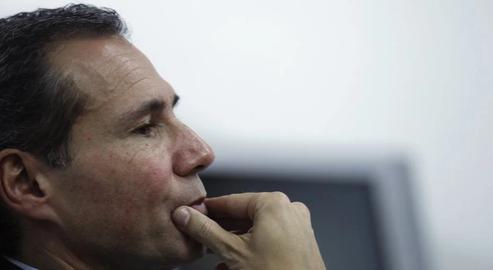
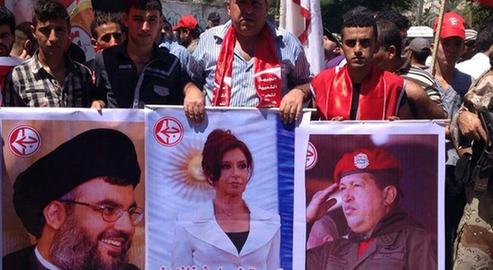
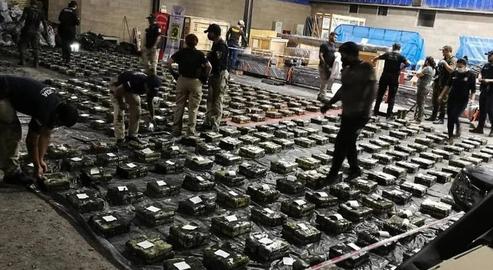










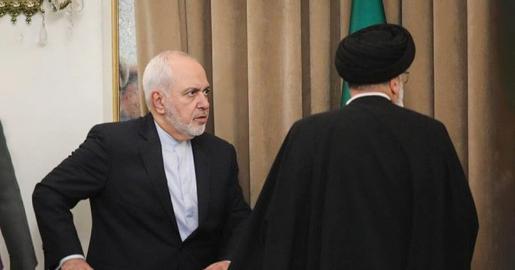
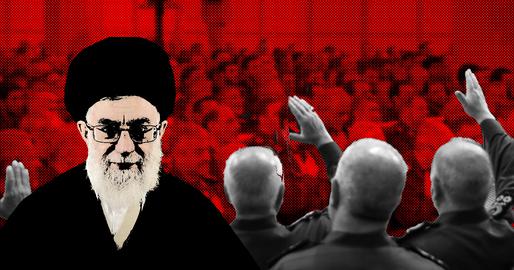







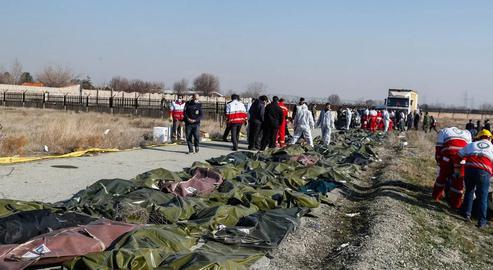
comments